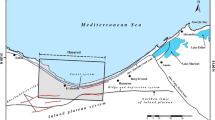Abstract
The study reported herein deals with the utility of satellite remote sensing techniques for land evaluation for agricultural land use planning. False colour composite of Landsat imagery in the scale of 1:250,000 was visually interpreted for physiography that formed the base for mapping soil and land resources in the field. The small-scale soil map thus prepared has thirteen map units with association of soil families. Soil and land resource units shown on these small-scale maps were evaluated for their suitability for growing sorghum crop by matching the relevant land qualities against the land requirements for sorghum. The land evaluation carried out for growing sorghum crop in the study area revealed that about 38.6 per cent is highly suitable (S1), 31.5 per cent moderately suitable (S2) and 24.5 per cent marginally suitable (S3). An area of about 5.4 per cent is not suitable, of which 3.0 per cent is currently not suitable (N1) and 2.4 per cent permanently not suitable for growing sorghum crop.
Similar content being viewed by others
References
Bennema 1975. General introduction to land evaluation.International Seminar on Land Evaluation in Arid and Semi-arid Zones of Latin America, IILA, Rome.
Dent D and Young A 1981.Soil Survey and Land Evaluation. George Allen and Unwin (Publisher) Ltd. London, U.K.
FAO 1976. A framework for land evaluation.Soils Bull. No. 32. F.A.O. Rome.
Klingebiel A A and Montgomery R M 1961.Agricultural Hand Book 210, U.S. Dept. Agric.
Kuhad M S, Karwasra S P S 1987. Land Evaluation studies in Semi-arid Central Alluvial plains area in district Rohtak, Haryana.J. ISPI and RS,15 (1) 67–76.
Manchanda M L, Jitendra Prasad, Iyer H S, Shukla R S and Dasgupta S 1982. Soil, Land Use and Land Evaluation studies of Patna area, Bihar.J. ISPI and RS,10 (3), 55–67.
Riquier J, Bramao D L and Cornet J P 1970. A new system of soil appraisal in terms of actual and potential productivity.Soil Resour. Dev. and Conserv. Service, FAO, Rome.
Saxena R K, Pofali R M and Hirekerur L R 1983. Preparation of Optimal Land Use Maps for agricultural development using remote sensing techniques.J. ISPI and RS.,11 (3), 29–38.
Sehgal J L 1986.Introductory Pedology; Soil Genesis, Survey and Classification. Kalyani Publishers, New Delhi.
Shiva Prasad C R, Thayalan S, Reddy R S and Reddy P S A 1990. Use of Landsat imagery for mapping soil and land resources for development planning in parts of Northern Karnataka, India.Int. J. Rem. Sens.,11 (10), 1989–90.
Soil Survey Staff 1975.Soil Taxonomy. Agri. Hand Book No. 436. U.S.D.A., Washington, D.C.
Sys C 1978. Evaluation of land limitations in the humid tropics.Pedologie, Ghent, No. 28, 307–335.
Author information
Authors and Affiliations
Additional information
The present study forms a part of the project work on the Soil Resource Mapping of Karnataka State.
About this article
Cite this article
Reddy, R.S., Thayalan, S., Shiva Prasad, C.R. et al. Utility of satellite data for land evaluation in land use planning for a part of Northern Karnataka. J Indian Soc Remote Sens 18, 34–44 (1990). https://doi.org/10.1007/BF02997071
Issue Date:
DOI: https://doi.org/10.1007/BF02997071




